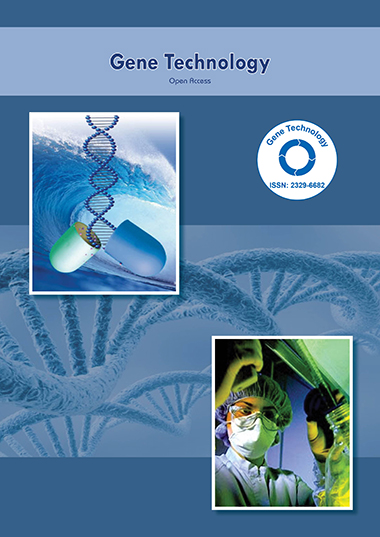Indexed In
- Academic Keys
- ResearchBible
- CiteFactor
- Access to Global Online Research in Agriculture (AGORA)
- RefSeek
- Hamdard University
- EBSCO A-Z
- OCLC- WorldCat
- Publons
- Euro Pub
- Google Scholar
Useful Links
Share This Page
Journal Flyer

Open Access Journals
- Agri and Aquaculture
- Biochemistry
- Bioinformatics & Systems Biology
- Business & Management
- Chemistry
- Clinical Sciences
- Engineering
- Food & Nutrition
- General Science
- Genetics & Molecular Biology
- Immunology & Microbiology
- Medical Sciences
- Neuroscience & Psychology
- Nursing & Health Care
- Pharmaceutical Sciences
Perspective - (2022) Volume 11, Issue 5
New Molecular Techniques in Analysing DNA and RNA
Shuchi Bohlin*Received: 03-Oct-2022, Manuscript No. RDT-22-18679 ; Editor assigned: 06-Oct-2022, Pre QC No. RDT-22-18679 (PQ); Reviewed: 20-Oct-2022, QC No. RDT-22-18679 ; Revised: 27-Oct-2022, Manuscript No. RDT-22-18679 (R); Published: 03-Nov-2022, DOI: 10.35248/2329-6682.22.11.205
Description
Molecular detection, identification, and typing of microorganisms also known as their molecular fingerprinting have increasingly moved from the academic world to the regular diagnostic laboratory. Over the past ten years, molecular techniques have been applied more frequently to increase the clinical laboratory's sensitivity, specificity, and turnaround time. The identification of novel, non-culturable agents has also been done using molecular techniques. Now that numerous highthroughput molecular assays are commercially available, many diagnostic facilities infrastructure is affected. Based on our clinical and public health experience, we examine the use of molecular methods from a broad perspective in this paper. We specifically focus on Borrelia burgdorferi, a vector-borne pathogen, Treponema pallidum, a reemerging global sexually transmitted pathogen, and West Nile virus, a newly identified virus in North America.
For the detection, diagnosis, and epidemiologic analysis of infectious microbes, molecular techniques can supplement traditional culture-, antigen-, and antibody-based approaches. Conventional approaches have drawbacks such as their inability to distinguish novel viruses descended from a common ancestor, time inefficiency while only producing adequate results, and poor sensitivity and specificity in test results. Now that molecular technologies are becoming crucial instruments in all laboratories for routine detection and fingerprinting, as well as supporting public health surveillance, it may be possible to apply infectioncontrol and intervention procedures quickly.
Gaining control over RNA
DNA bricks and DNA folding are two techniques invented by Yin's team at the Wyss Institute that allow DNA and RNA molecules to self-assemble into huge structures depending on various needs and principles. They postulated that similar techniques may be used to connect together naturally occurring RNA molecules in order to assemble them into highly structured circular complexes in which their ability to bend and move is severely constrained. Numerous RNAs fold in unpredictable yet intricate ways, with the bases of the tiny segments base-pairing. A stable "core" and "stem-loops" that protrude into the periphery are frequently the end result.
Picturing stabilized RNA
Any current web browser that supports WebGL will be able to run OxView in its current state, while Google Chrome performs best with very large structure sizes. We present oxView, a JavaScript application based on the Three.js visualisation toolkit, which offers quick, approachable, and adaptable visualisation capabilities with little technological overhead. OxView can smoothly depict structures containing millions of nucleotides because it leverages hardware instancing to offload the majority of object geometry calculations to the computer's GPU. Additionally, oxView provides simple editing features. We can choose specific particles, or we can choose entire strands and systems. Additionally available are box selection, range selection, and cluster selection. Clustering can be allocated manually from different selection methods or automatically utilising the Density-Based Spatial Clustering of Applications with Noise (DBSCAN) algorithm.
Before being realised in the lab, this technology will be used to iteratively prototype DNA/RNA nanostructural designs. The structure can be briefly simulated, examined for flaws, repeatedly changed in the viewer, and then put back into simulation to confirm success. Researchers can combine structures from various sources to create complicated visions by using this tool as a neutral ground between structures designed in other editing tools. For oxDNA/RNA, It also enables the development of mutual trap external force files. These files specify false pairwise spring potentials between nucleotides that can be loaded in an oxDNA simulation when simulating the relaxation of a complex structure made up of many parts or when relaxing a structure imported from the CaDNAno format.
The numerous applications and analytic scenarios that RNA-seq can be utilized for do not all have an ideal process. Depending on the organism being investigated and their research objectives, scientists design their experiments and use various analysis methodologies. For instance, if the organism being examined has a genome sequence, it should be easy to identify the transcripts by placing RNA-seq reads on the genome. In contrast, quantification would be accomplished for organisms without sequenced genomes by first assembling reads into contains de novo and then mapping these contains onto the transcriptome. Scholars may decide to base their RNA-seq analysis for well-annotated genomes, like the human genome, solely on the currently available annotated reference transcriptome, or they may strive to find additional transcripts and their differential regulation. Additionally, researchers may just be focused on identifying allele variants, microRNA (miRNA) levels, or messenger RNA isoform expression. In each of these scenarios, there will be a significant difference in the experimental design and the analysis techniques. To improve the analysis of gene expression, RNA-seq can be employed alone for transcriptome profiling or in combination with other functional genomics techniques. Finally, RNA-seq can be used in conjunction with various biochemical assays to examine a variety of additional RNA biology topics, including RNA-protein binding, RNA structure, and RNA-RNA interactions.
Citation: Bohlin S (2022) New Molecular Techniques in Analysing DNA and RNA. Gene Technol. 11:205.
Copyright: © 2022 Bohlin S. This is an open access article distributed under the terms of the Creative Commons Attribution License, which permits unrestricted use, distribution, and reproduction in any medium, provided the original author and source are credited.

